The best comic strips of 2019
Peter Breedveld
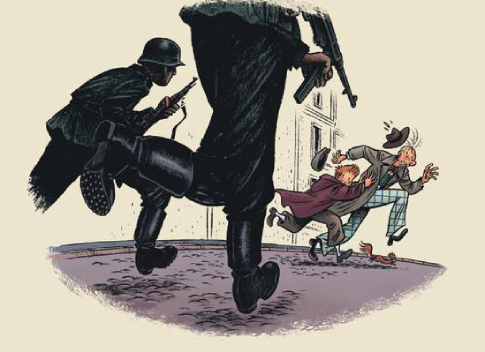
One of the best comic strips of the past decade are Alan Moore and Jacen Burrows’ take on the life and work of H.P. Lovecraft, ‘Providence‘, mercilessly dark and mystical. ‘My Favorite Thing is Monsters‘ by Emil Ferris is undeniably one of the important graphic novels of the decade. Much lesser known but certainly not less important is Leela Corman’s Unterzakhn, about two daughters of Russian-Jewish immigrants at the beginning of the 20th century, one a prostitute, the other an abortion doctor. Leela Corman, whom I interviewed a couple of years ago at the Dutch literary Writers Unlimited festival, is the American graphic novelist you should know.
The best and most gorgeous looking superhero comic of the past 25 or so years is Hellboy by Mike Mignola, and don’t let anybody tell you anything different. I’ve been collecting and rereading the handsome Hellboy Library Editions these past years. Mignola pairs H.P. Lovecraft to Jack Kirby’s superhero stuff, sets it in chiaroscuro, and it’s gorgeous and fun.
Brian K. Vaughan and Fiona Staples’ science fiction fantasy political satire strip Saga is massively entertaining. Currently I am following Vaughan’s Paper Girls, which is great stuff too. Love & Rockets by Los Bros Hernandez keeps going strong after forty years or so. Monstress, by Marjorie Liu and Sana Takeda, is one of the revelations of the last ten years.
Adrian Tomine’s Killing and Dying is a chronicle of human failure and disappointment, with no hope for relief, beautifully done, definitely a classic. ‘The Property‘ by Israelian Rutu Modan is a great tragical comedy.
It’s good to see that comic strips are gradually taken over by women. France is definitely a pioneer in that regard, with many great books by great female authors. I am a big fan of Julie Birmant, especially her Isadora, Chloé Cruchaudet’s ‘La Croisade des Innocents‘ is amazing. Daphne Collignon is one of the best artists around. Her book ‘Sirène‘ is jaw-dropping.
But really, if you want to know what I thought was noteworthy the past decade, just check out all my comic strip pieces.
2019
I am still trying to finish Chris Ware’s Rusty Brown, that everyone is hysterical about. I am a big fan of Ware’s Jimmy Corrigan but twenty years or so later I find he’s still doing exactly the same thing. He does it well, but Rusty Brown takes me longer than the Bible and his panels are often so small, with tiny letters in tiny balloons I can’t even read them without a magnifying glass. I am halfway through the book now and must confess it’s beginning to bore me.
Comic series I have been following for the past few years are Paper Girls, Black Hammer, Monstress and the follow-up to Descender, Ascender. I recommend those. I didn’t buy the new Love & Rockets graphic novel because that’s a compilation of the stories in the L&R comic I collect, but I recommend it. I bought the new Chat du Rabbin by Joann Sfar but haven’t read it yet, same goes for the second part of Jodorowsky’s Les Fils d’El Topo
10) Alan Moore: ‘Absolute Swamp Thing‘
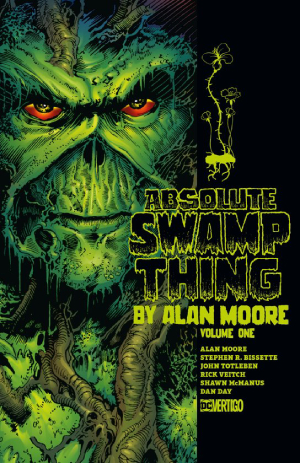
Before Neil Gaiman’s Sandman, there was Alan Moore’s Swamp Thing. The first American superhero comic to get a make-over by British writers like Gaiman, Grant Morisson, Jamie Delano and of course Moore himself. Drawn by already (it appears) forgotten legends like Steve Bisette, John Totleben and Rick Veitch it’s one of the most intriguing comics in history. Unfortunately, people wanting to read it were dependent on poorly printed trade paper backs with stark colours that gave everything a cheap look. That misery has ended now, with the release of the first volume of The Absolute Swamp Thing, a beautiful slipcased book full of crispy clear art with brand-new coloring. The pages of Swamp Thing never looked so good.
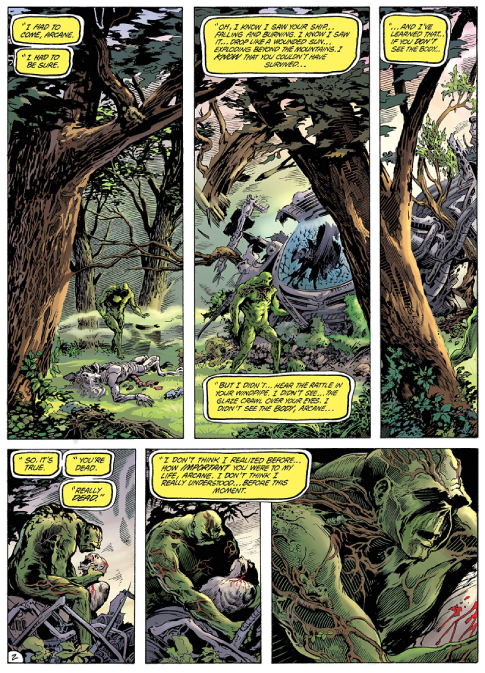
9) Giorgia Marras: ‘Sissi; une femme au-delà du conte de fées‘
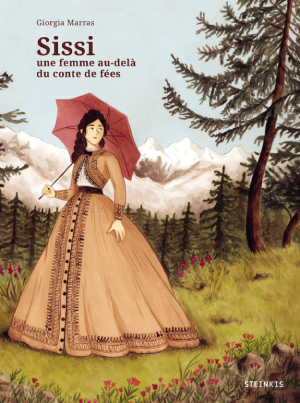
The story of the Austrian-Hungarian empress Elisabeth a.k.a. Sissi is famous mainly because of the very romantic Romy Schneider movies. Italian comic artist Giorgia Marras tells a darker story of a woman resisting the masculine militarism dominating her court and employing diplomacy and her personal charm to try and prevent her country going to war with rebellious Hungary. Marras’ drawings are static and naive, embellished with soft greys. She draws quiet scenes with slow moving characters, making subtle gestures. Atmosphere is king in this dignified period piece.
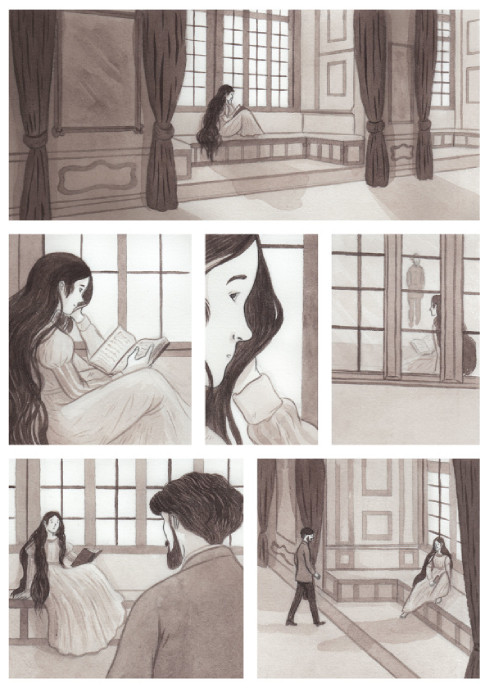
8) Joann Sfar and Christophe Blain: ‘Blueberry: Apertume Apache‘

The best western comic strip in the history of western comic strips, originally written by Belgian Jean-Michel Charlier and drawn by French artist Jean Giraud (a.k.a. Moebius), is picked up by Joann Sfar (of The Rabbi’s Cat) and Christophe Blain (Isaac the Pirate), who stay true to the essence of the original Blueberry, but give it a thoroughly modern take with strong and complicated female characters, strong and complicated Native American characters and a multilayered story that reminded me of Hugo Pratt’s Scorpions of the Desert. White colonisers in a hostile environment, surrounded by hostile people. Sultry and delirious. Christophe Blain’s energetic, dynamic art is sublime.
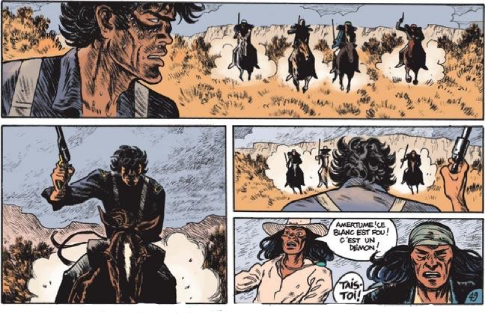
7) Eleanor Davis: ‘The Hard Tomorrow‘

Very elegantly drawn story about a couple trying to build up a life outside of society where the authorities crack down on everyone resisting the bosses, or whatever. But it’s not all black and white, not every police man (or woman) is a fascist and a lot of the social warriors are a few crayons short of a colouring box. As in all Davis’ work, there’s a deep humanity here. Davis depicts her characters with compassion. She does, however, have a cruel streak and a knack for humorous absurdity.
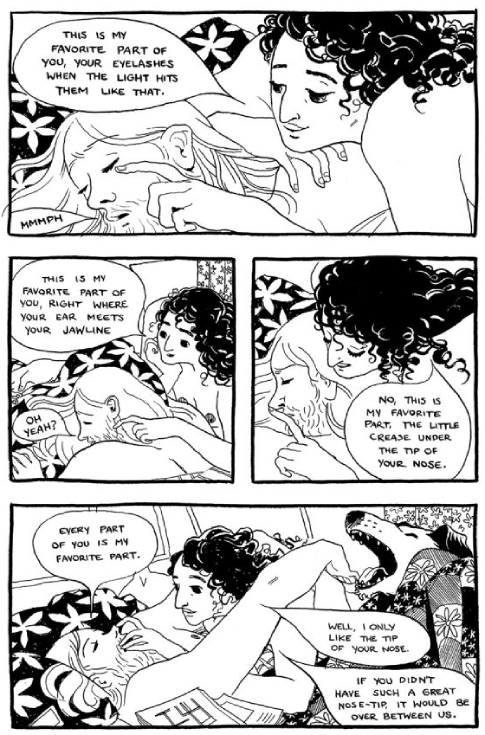
6) Nathalie Ferlut & Tamia Baudouin: ‘Dans la Forêt des Lilas‘
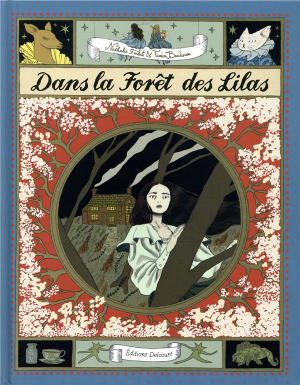
Beautifully poetic fantasy story about a girl turning into an adult and dying at the same time. To escape the cruelty of real life, she escapes into a Lewis Carol-like world of fantasy, which however, is not free from loss and betrayal either. Baudoin’s art is magically dream-like and atmospherical. Ferlut doesn’t pull punches, as the French seldom do, despite this graphic novel being aimed at adolescents. In that regard it reminds me a little of Otfried Preussler’s classic Krabat, Master of the Black Mill.
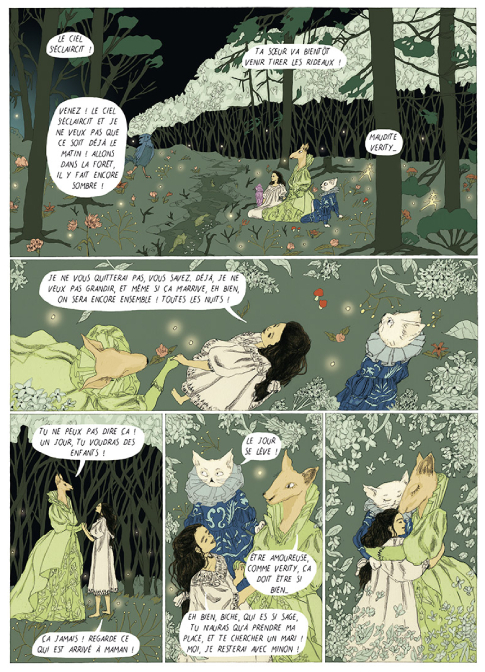
5) Grant Morisson and Liam Sharp: ‘The Green Lantern Vol. 1: Intergalactic Lawman‘
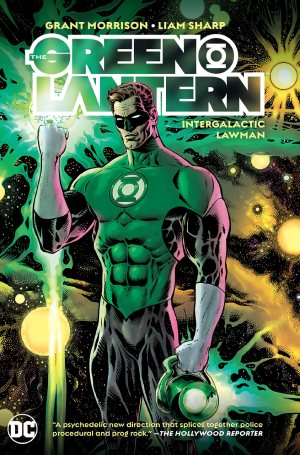
I don’t get the enthusiasm of critics for the New X-Men line, while they ignore the current Green Lantern series. If you read one superhero-comic, let it be Grant Morisson’s brilliant psychedelic take on Green Lantern, for which no artist is better suited than Liam Sharp. Morrison, one of the Brits who (along with people like Neil Gaiman and Alan Moore) were flown in at the end of the eighties to give American superheroes some much needed fresh energy, does not so much deconstruct the genre as play with the tropes, have fun with it. The result is an irreverent, humorous take on a superhero who is, even in a world of x-ray vision and invincable Amazonians, rather absurdistic to start with (GL forms huge green weapons with a ring he posesses, often ordinary tools like hammers or scissors), which is at the same time a philosophical tale of morality and a social commentary and above all a brilliant piece of mind-fuckery.
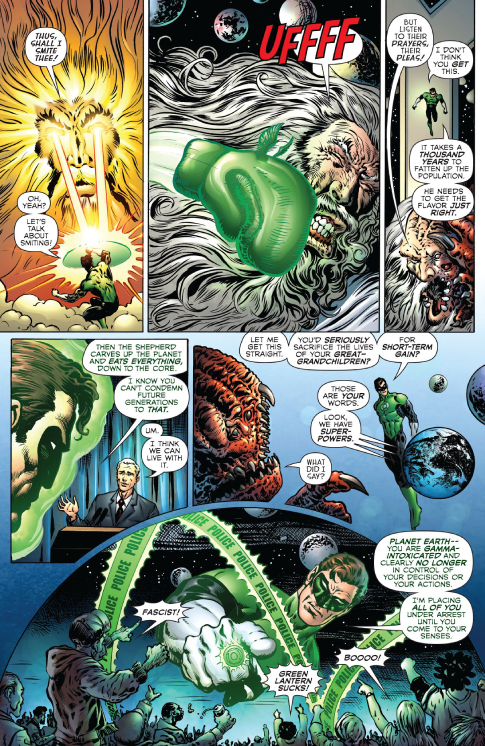
4) Laura Perez: ‘Ocultos‘
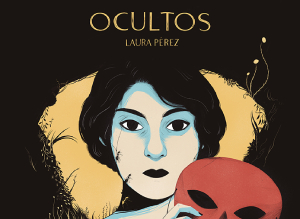
Horror strips don’t scare me as easily as horror movies, but this one is genuinely eerie. Spanish author Perez knows how to work with silence in her strips. Maybe you think that’s stupid because all comics are silent, but they’re not. Comics are noisy, but Ocultos is mostly still. And almost nothing happens except a lot of things happen. There is a presence in a house, a world behind a mask, an ancient power in a beetle, there are fleeting contacts between people and the afterworld. The stories in Ocultus are restrained, perfectly timed and dosed and beautifully drawn nightmarish slices of life.
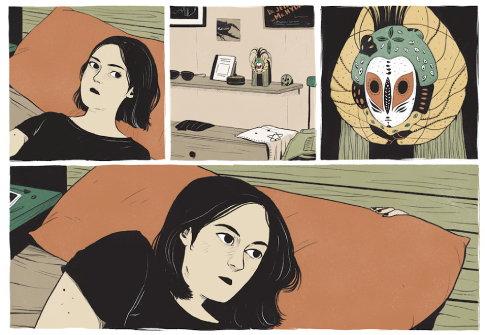
3) Cristina Portolano: ‘Je ne te connais pas‘
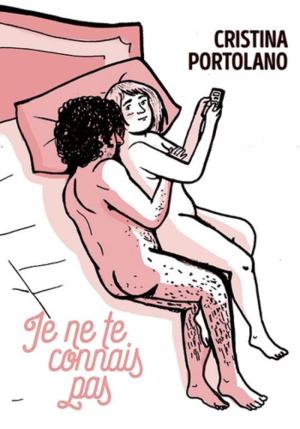
I have never dated anyone I met on the Internet, never tried dating sites, had no idea how they work, until I read this very informative book about a woman meeting men on a dating site, fucking them, avoiding them afterwards or being avoided by them afterwards, the awkwardness, the bad sex, the good sex, the okayish sex. A whole new world opened to me. Portolano tells it all unashamedly, unapologetically, in a fully functional drawing style that is not to be stared at but to be read. An excellent read. Originally from Italian, it’s translated in Spanish (besides French, in which I read it) but not in Dutch or English.
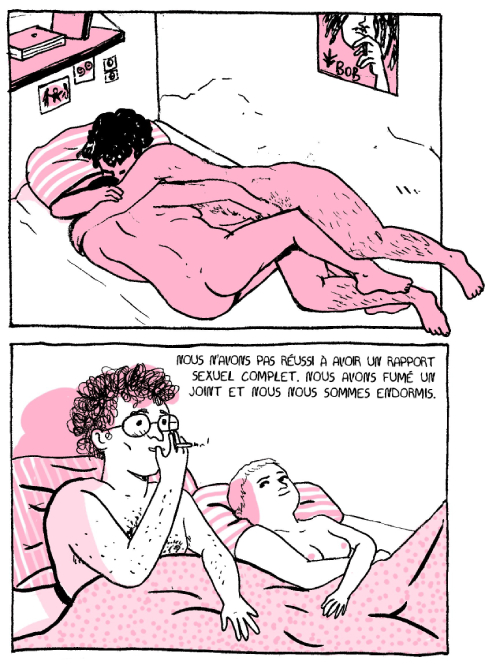
2) Aude Mermilliod: ‘Il Fallait Que Je Vous Dise‘
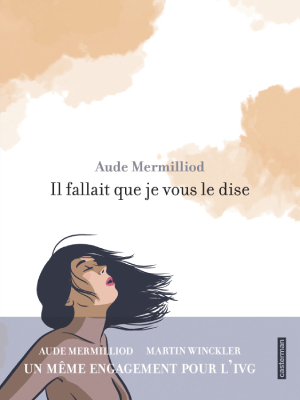
In this stunning, emotionally tense graphic novel . Mermilliod gives a completely honest account of the abortion she had. She teams up with writer Martin Winckler, who is an abortion doctor and whom she introduces as a character in her story, to break the many taboos around abortion. But this is far from an educational comic strip, although it ís a very educational comic strip. Mermilliod deals with her own ambiguous stand towards abortion, her mixed emotions, the messiness of life and sex in particular, and the importance of having people to confide in. A moving and sometimes shocking graphic novel, elegantly drawn and coloured.
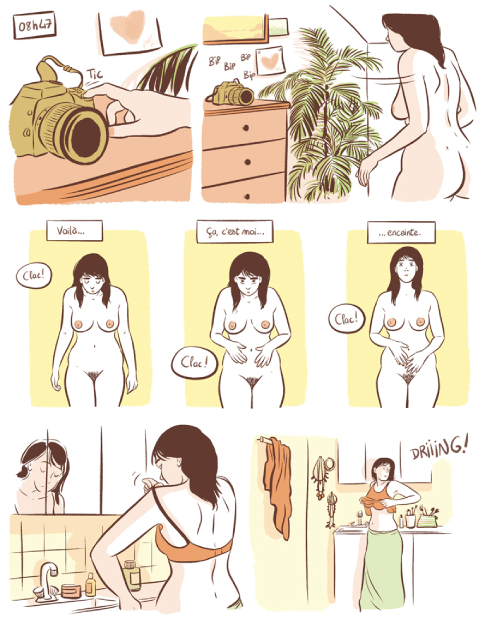
1) Émile Bravo: ‘L’Espoir Malgré Tout; deuxième partie‘
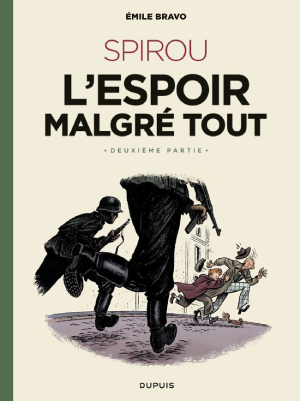
I am in awe of how Émile Bravo handles these 80 year old comic strip characters in a situation as grave as the occupation of Belgium by the Nazis. He never makes light of the Second World War, doesn’t hide or disguise anything and he doesn’t even suggest that Spirou and his friends stand a chance against the Nazis. Yet he stays true to the essence of Spirou, a brave, intelligent but thoroughly naive boy who is confronted with the limits of his principles, anyone’s principles, in the face of such a ruthless and cruel enemy. There are plenty of laughs thanks to his blundering, opportunistic and egotistical friend Fantasio, but the danger is very real as is the evil, when even children turn against the friends who are singled out as Jews. The Nazis are always depicted as faceless, blackish demons.
The first part of this series ended up high in last year’s list. Unfortunately, although Bravo’s prologue to this series has been translated in English, the subsequent albums have not. Dutch and Belgian (and Surinamese and Dutch Antillean) readers who don’t understand French are more fortunate.
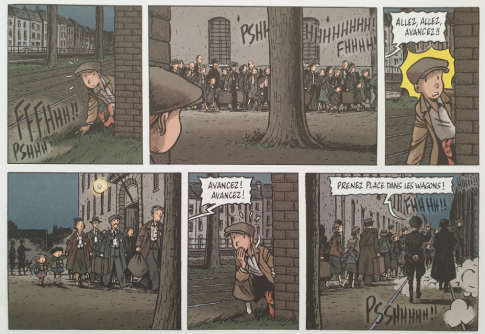
Comics, Lists, Peter Breedveld, strips, 01.01.2020 @ 12:09


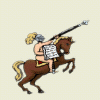
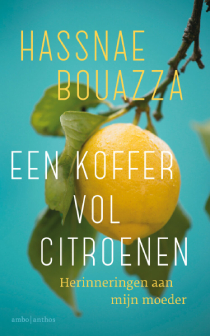
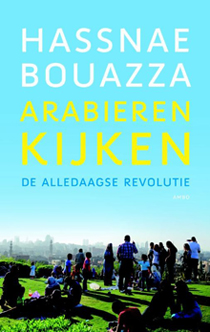
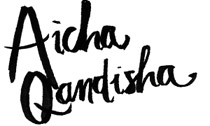

 RSS
RSS